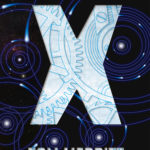 1827 – Mathematics student William Rowan Hamilton presented his “Theory of Systems of Rays” at the Royal Irish Academy in Dublin. It led to the development of the wave theory of light which led to the development of quantum mechanics.
1827 – Mathematics student William Rowan Hamilton presented his “Theory of Systems of Rays” at the Royal Irish Academy in Dublin. It led to the development of the wave theory of light which led to the development of quantum mechanics.
1940 – A patent was granted to Herman Anthony for a leak-proof dry-cell battery. The patent was assigned to Ray-o-Vac.
1941 – Ray Tomlinson was born in Amsterdam, New York. In 1971 he would expand SNDMSG to work between computers on the Arpanet, which would become email. He chose the @ symbol to separate the recipient’s name from the computer domain.
1982 – Sinclair launched the ZX Spectrum which popularised home computing in the UK.
2005 – At 8:27 PM, Jawed Karim, one of the co-founders of YouTube, uploaded the video Me at the zoo making it the first video ever to be uploaded to YouTube.
Like Tech History? Get the illustrated Year in Tech History at Merritt’s Books site.
